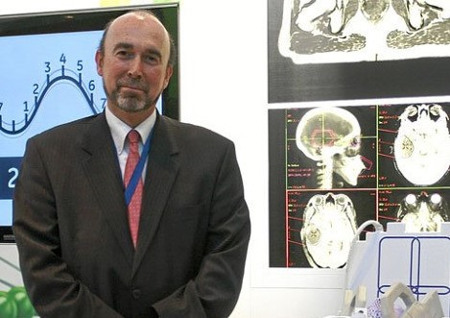Ferran Guedea, director of Radiation Oncology of the Catalan Institute of Oncology (ICO) and full academician of the Royal European Academy of Doctors-Barcelona 1914 (RAED), has led the Symposium “Nuevas tecnologías de radioterapia: radiocirugía intracraneal” (“New radiotherapy technologies: intracranial radiosurgery”), which have celebrated jointly the ICO and the University Hospital of Bellvitge on the occasion of its first 25 years of application of intracranial radiosurgery techniques. The meeting brought together more than 150 specialists from the fields of radiation oncology, medical physics, radiosurgery, neuroradiology and neurology from all over Spain, as well a delegation from Mexico.
Radiosurgery is a frequent therapy in the treatment of small malignant tumours at brain level and that can be used for the treatment of other non-tumour, vascular and functional neurological pathologies. In 1993, intracranial radiosurgery was started in these two centres that have always worked in a coordinated way and since then more than 2,500 patients have been treated with this technique. During the symposium, the next implantation of functional intracranial radiosurgery to treat various benign pathologies in the field of neurosurgery was presented, such as trigeminal nerve neuralgia and tremor from different origins, such as Parkinson’s or epilepsy, among others.

Dr Ferran Guedea
Trigeminal neuralgia is characterized by a lacerating pain, described as a sudden electric shock. Currently, its treatment is based on medical therapies with various types of analgesic medication, although in 25% of cases it isn’t effective. Radiosurgery is indicated in patients with trigeminal neuralgia refractory to medical treatment, in elderly patients, in some patients with anticoagulant treatment or with any other associated morbidity that contraindicates anaesthesia.
Regarding the tremor due to Parkinson’s, multiple sclerosis or various injuries, radiosurgery is an alternative for those patients with a bad response to pharmacological treatment. The use of radiosurgery can also be considered in the treatment of patients with drug-resistant epilepsy in whom medical and surgical treatment has not been effective, as well as in those patients who are not candidates for surgery due to advanced age, location of epileptogenic foci or associated comorbidity that implies a high aesthetic risk.

